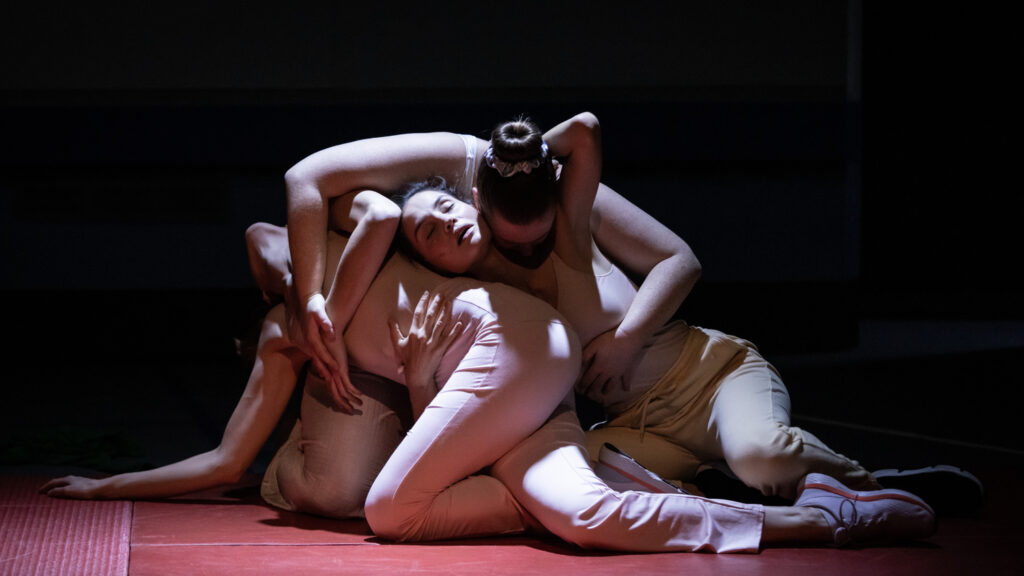The main character in The song [Reboot] is a town in Seine-et-Marne, which is next door to my parents’ home. I tried to find the most appropriate metaphor for this place. This real town became the setting for a fiction. I invented a story. I created characters. I gave them names and an existence. The Song is a fable. It has the naivety and cruelty of one.
Why revive The song today? This show seems to come from another world, a world in which social networks were still in their infancy, and where climate issues were struggling to become popular.
At the time, the members of Abba seemed to be angry for life and declared that they would ‘never get back together’. Now, in 2021, Abba are announcing their return on Tik tok, and their holograms will be taking charge of the tour against a backdrop of the end of the world.
In 2011, I was different too. I was at the beginning of a long journey of artistic and feminist emancipation. When I wrote The Song, I had Premiers matériaux pour une théorie de la jeune fille by the Comité invisible on my bedside table.
Barbara, Pauline and Jessica grew up in a ready-made world. Everything is digested and standardised: their day, their role, their emotions. Entertainment and consumerism are the mottos of their empire. The invention of the characters Barbara, Pauline and Jessica stems from this anarchist culture of the young girl as agent and product of consumption.

When I wrote The Song, I was standing on a bridge suspended between two banks. On one side was the seduction of Disney, the science of storytelling and entertainment, the cardboard nostalgia of childhood forever. There was a strong desire to incorporate this cultural hegemony as the original matrix.
On the other shore was the anarchist revolution, the world of deconstruction and artistic experimentation. What these two shores had in common was their propaganda.
Nourished by a stint in the cinema in 2018, La chanson is back. Enriched by new artistic collaborations, La chanson is rebooted to ask: in the age of our new cultural modes of consumption, has the young girl really emerged from her alienation?
Since The Song is about imitation and copying, it was imperative that the song become The song [reboot].
Tiphaine Raffier
© photo : Simon Gosselin / Loewen photographie
Written and directed by Tiphaine Raffier
With Jeanne Bonenfant, Candice Bouchet, Clémentine Billy
Assistant directors Clémentine Billy and Joséphine Supe
Set design and lighting Hervé Cherblanc
Video Pierre Martin Oriol
Music Guillaume Bachelé
Sound Martin Hennart
Costumes Caroline Tavernier
Choreography Johanne Saunier
Technical Director Olivier Floury
Video and Lighting Manager Lucie Decherf
Sound Manager Jehanne Cretin-Maitenaz
Production La femme coupée en deux
Coproduction Théâtre de Lorient CDN, Le Préau CDN de Normandie -Vire, Théâtre Sorano –Toulouse
Duration 1h20
Press Review